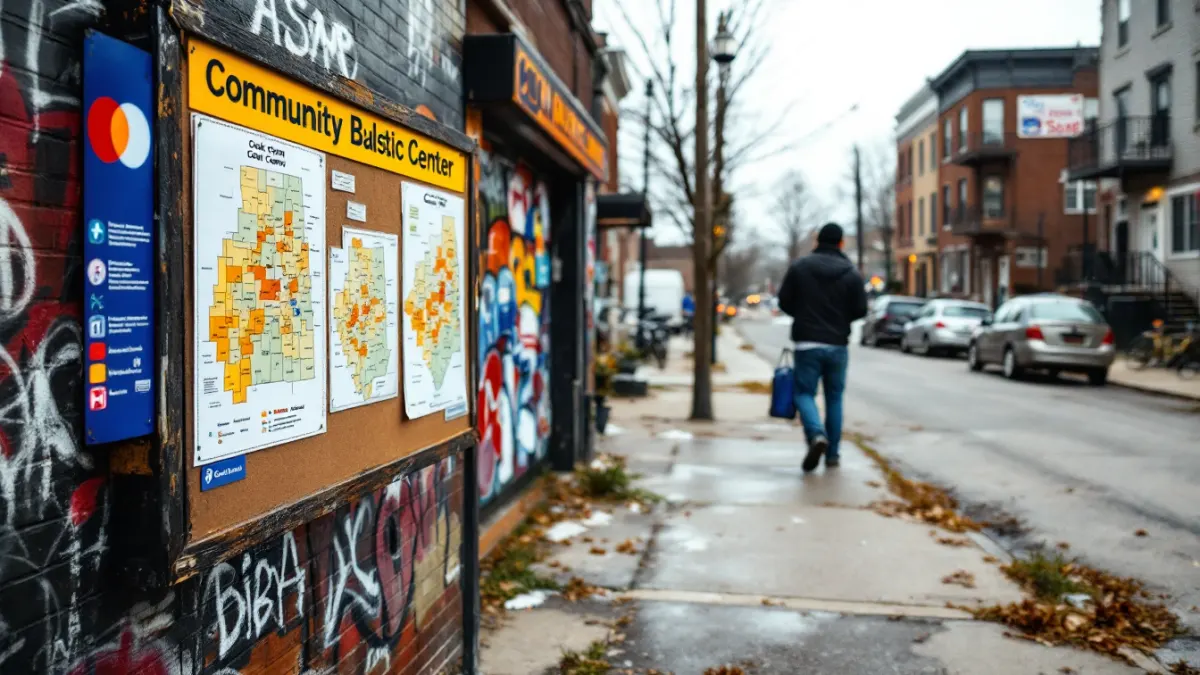How Cook County Made Basic Income Permanent and Why It Matters

While many U.S. cities trial basic income programs and fail to sustain them, Cook County in Illinois, home to Chicago, just made its $500-a-month program permanent in its 2026 budget. Cook County invested $7.5 million to continue supporting a guaranteed basic income after a two-year pilot paid 3,200 households $500 monthly. But this isn’t just welfare—it’s a strategic infrastructure shift that creates social and economic leverage across vulnerable populations.
Guaranteed basic income programs are often viewed as costly handouts with uncertain benefits. Cook County’s move challenges that view by making a conditional social experiment an ongoing system providing financial stability without strings attached. This repositions the traditional welfare constraint—from limited, bureaucratic aid to automated, unconditional cash flow directly empowering recipients.
Why Basic Income Is Not Just Social Spending
Conventional wisdom treats basic income pilots as temporary social experiments with no sustainable ROI. Cook County’s permanent transition reframes it as foundational infrastructure enabling healthier, more stable lives that reduce costly interventions like emergency services and homelessness programs. Unlike cities that cut pilots after 1-2 years, Cook County institutionalized program funding, proving commitment to systemic change.
This shift parallels the leverage in process improvement—investing upfront for cascading long-term efficiency and impact. By removing eligibility friction and work requirements, the program automates wellbeing support at scale. Cook County sidesteps the costly oversight common to traditional welfare, replacing it with cash trust that recipients use for food, rent, and transportation.
Comparing Global Approaches to Basic Income
Unlike Ireland, which recently made basic income permanent only for artists, or South Korea, planning the world’s largest pilot, Cook County targets a broad low-income segment with no restrictions on spending. This creates a system-level competitive advantage by recognizing diversity of need instead of imposing one-size-fits-all aid. Other U.S. counties have ended pilots over budget concerns, but Cook County integrates this into its 2026 operational plan — an act of strategic constraint repositioning.
Unlike universal basic income proposals debated nationally, Cook County chose a guaranteed income model focused on residents near the poverty line, allowing targeted cost control with measurable socioeconomic outcomes. This parallels leverage seen in how automation facilitates complex efficiency gains by tightly controlling scope for balance of scale and cost.
Forward-Looking Leverage in Social Systems
The constraint that changed is the funding model—moving from temporary pilot grants to embedded recurring county budget allocation. This creates a predictable, self-sustaining social safety net that requires minimal ongoing program management, unlocking durability similar to business continuity mechanisms. Other cities facing economic inequality should watch Cook County as a blueprint to systematize social aid without complexity bloat.
By permanently freeing 3,200 households from financial precarity, Cook County enables compounding social returns: healthier residents can work, spend locally, and stabilize communities. This aligns with strategies similar to business efficiency leverage—optimizing an ecosystem by resolving its bottlenecks. Cook County’s approach forces a rethink: unconditional cash transfers can be an infrastructure asset, not just a cost.
“True leverage comes from redesigning constraints, not cutting corners.”
Related Tools & Resources
The strategic shift Cook County made to embed basic income as a durable social infrastructure echoes the importance of clear, efficient process management. For organizations and teams looking to systematize complex programs and reduce management overhead, tools like Copla provide essential support by simplifying standard operating procedures and workflow documentation. Learn more about Copla →
Full Transparency: Some links in this article are affiliate partnerships. If you find value in the tools we recommend and decide to try them, we may earn a commission at no extra cost to you. We only recommend tools that align with the strategic thinking we share here. Think of it as supporting independent business analysis while discovering leverage in your own operations.
Frequently Asked Questions
What is a guaranteed basic income program?
A guaranteed basic income program provides unconditional cash payments to recipients to ensure financial stability. For example, Cook County's program pays $500 monthly to 3,200 households without restrictions on spending.
How does Cook County's basic income program differ from traditional welfare?
Unlike traditional welfare that often involves bureaucratic aid and restrictions, Cook County's program offers automated, unconditional cash transfers that empower recipients with financial trust and minimal oversight.
Why is making basic income permanent important?
Making basic income permanent creates a durable social infrastructure that provides ongoing financial stability and reduces costly interventions. Cook County institutionalized funding in its 2026 budget with a $7.5 million allocation, moving beyond temporary pilots.
What are some global approaches to basic income compared to Cook County's model?
Other places like Ireland made basic income permanent only for artists, and South Korea is planning large pilots. Cook County targets a broad low-income group with no spending restrictions, creating a more flexible and inclusive system.
How does basic income provide economic leverage?
Basic income provides social and economic leverage by enabling healthier, stable lives that reduce emergency service and homelessness program costs. Cook County's program removes eligibility friction and automates wellbeing support for scale and efficiency.
What is the funding model behind Cook County's basic income program?
Cook County moved from temporary pilot grants to recurring county budget allocation, ensuring predictable, self-sustaining funding that minimizes ongoing management and supports long-term systemic change.
How many households benefit from Cook County's program and what is the monthly payment?
The program supports 3,200 households by providing $500 per month, permanently embedded in the 2026 county budget with a $7.5 million investment.
What are the expected social outcomes of the permanent basic income program?
The program aims to improve financial security, allowing residents to work, spend locally, stabilize communities, and reduce reliance on costly social interventions, thus producing compounding social returns over time.

